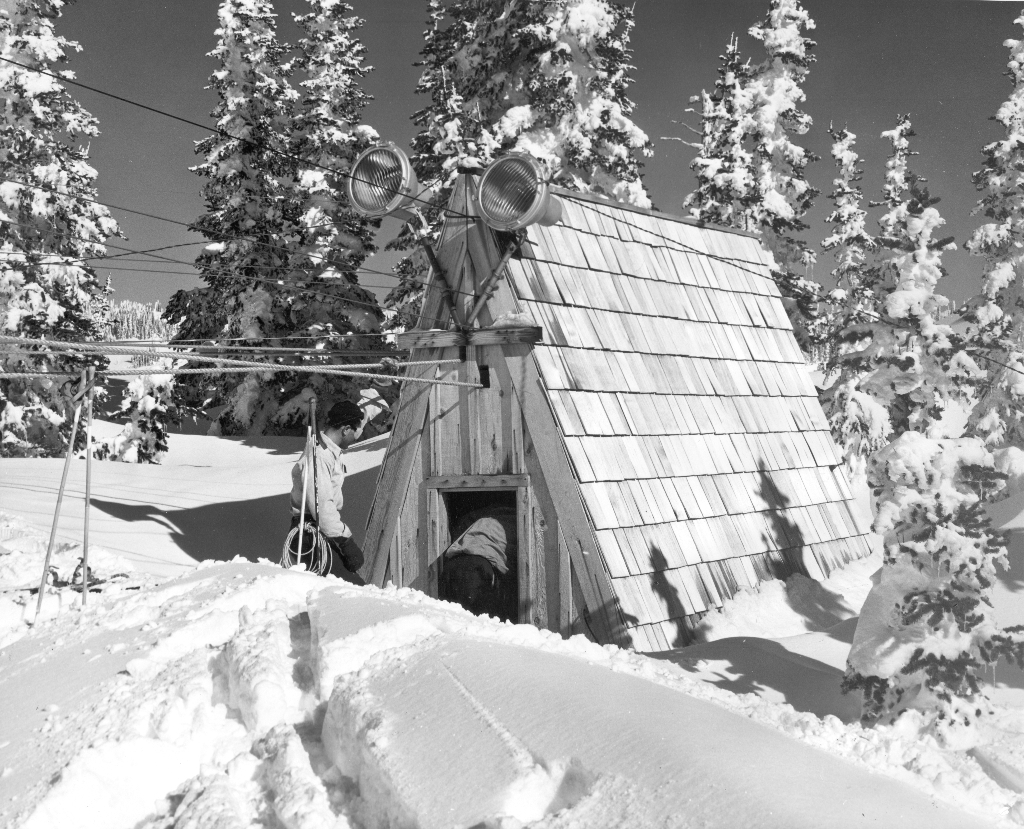
In the 1930s, winter-time access to Paradise brought more opportunities for winter recreation. Ski races and even Olympic tryouts were held in Paradise. The first tow rope at Paradise was constructed by the Civilian Conservation Corps in 1937. It was installed in 1938 and went to the top of Alta Vista.
After World War II, returning soldiers with wartime ski training made downhill skiing very popular in the U.S. As demand for downhill skiing grew in the 1940s and 1950s, demand also grew to install more lifts and ski jumps at Paradise. Park managers had one firm rule; whatever was put up for the ski season had to be brought down before summer. After all, who wants to see a line of chairlift supports and cables running through their favorite meadow?
Throughout the 1950s and 1960s, downhill skiing grew in popularity in the U.S. and more folks from the Puget Sound wanted to drive up to Paradise to ski. As their demand for ski opportunities at Paradise peaked, a new answer arrived. The U.S. Forest Service began leasing land to downhill ski groups outside the park at Crystal Mountain and White Pass. There developers could build all the lifts, jumps and gondolas that downhill skiers demanded. Other winter activities replaced downhill skiing at Paradise. Cross-country and back-country skiing replaced downhill skiing. Instead of needing lifts and gondolas, these skiers would “skin up” hills under their own power and then ski down. The rope tow operated until the 1970s. Today the building that powered the rope tow remains. The interior is closed to visitors.
For decades, rangers, volunteers, and staff have worked to balance the needs of visitors and the protection of the meadows and other natural resources. Bringing harmony to Paradise is still a work in progress today.
Is there something we missed for this itinerary?
Itineraries across USA


















































